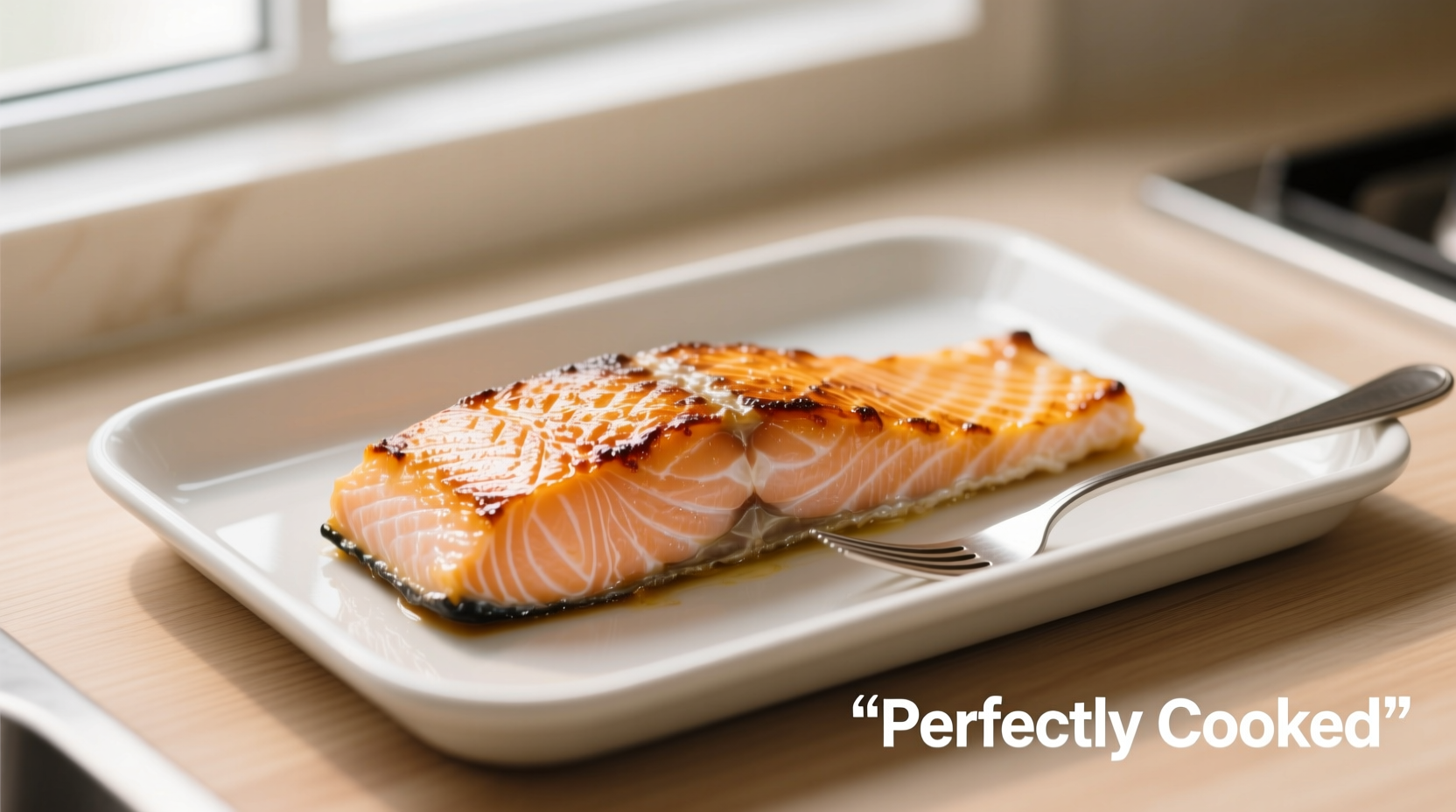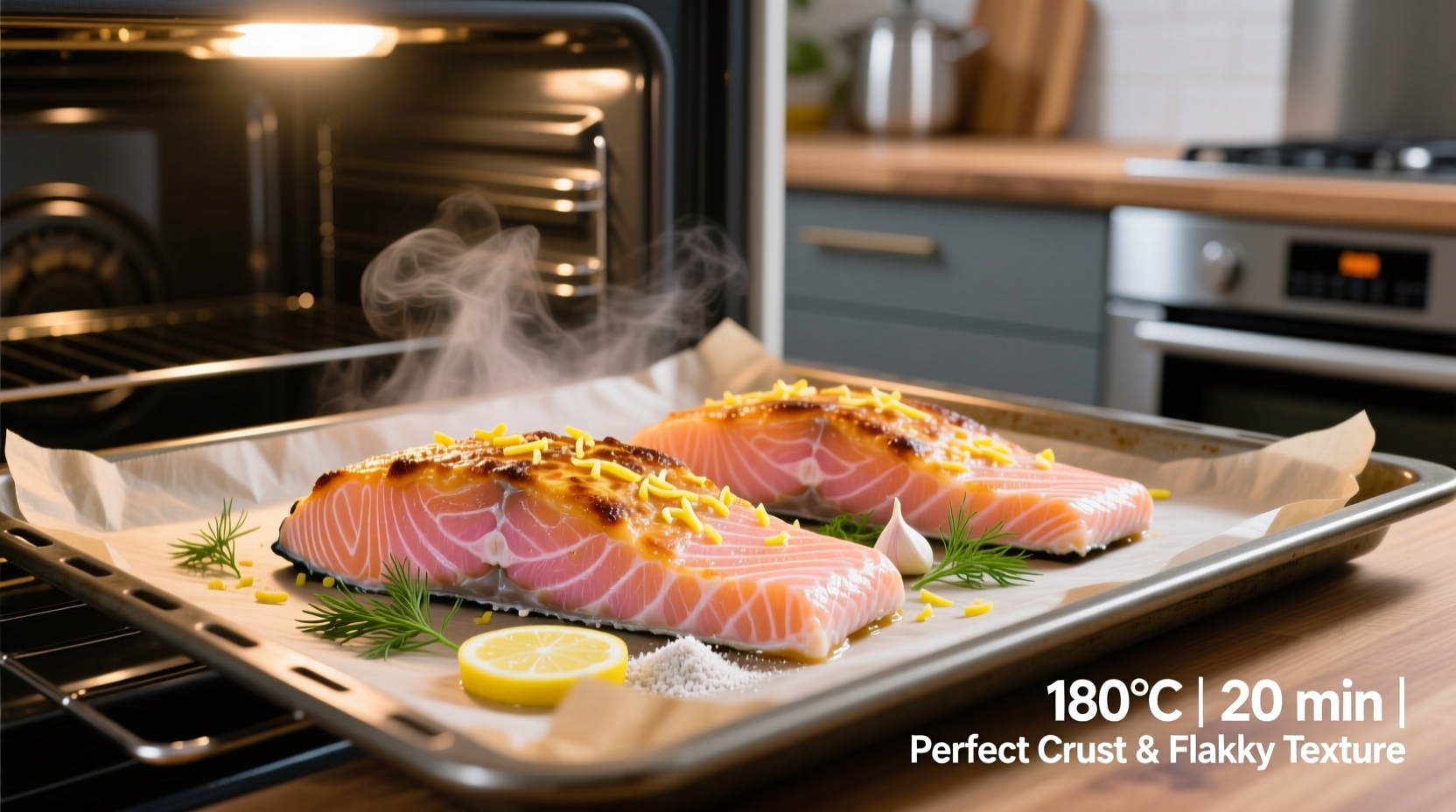Stop planning your dinner around thawing time. You can transform frozen salmon fillets into a restaurant-quality meal in under 30 minutes with nothing more than your oven and basic pantry staples. This method eliminates the food safety risks of improper thawing while preserving the fish's delicate moisture and flavor.
Why Cooking Frozen Salmon Works Better Than You Think
Contrary to popular belief, cooking salmon straight from the freezer often yields superior results compared to thawed fish. The FDA confirms that cooking certain proteins from frozen is not only safe but can prevent the texture degradation that sometimes occurs during thawing. When frozen salmon thaws unevenly, the exterior begins to cook while the interior remains frozen, leading to dry edges and undercooked centers.
Professional chefs like those at America's Test Kitchen have found that the controlled, gradual heating of an oven allows frozen salmon to cook more evenly than methods requiring direct heat contact. The moisture released during cooking creates a natural steam environment that keeps the fish tender.
What You'll Need
- Frozen salmon fillets (skin-on or skinless)
- Olive oil or melted butter
- Salt and freshly ground black pepper
- Optional seasonings: garlic powder, lemon zest, dill, paprika
- Baking sheet
- Parchment paper
- Instant-read thermometer
Step-by-Step Cooking Instructions
Preparation (2 minutes)
Remove salmon from freezer packaging and rinse under cold water to remove ice crystals. Crucially, pat extremely dry with paper towels - this prevents steaming and promotes proper browning. Place fillets on a parchment-lined baking sheet, leaving space between each piece.
Seasoning (1 minute)
Lightly coat both sides with oil or melted butter. Season with 1/4 teaspoon salt and a few grinds of black pepper per fillet. For flavor variations:
- Lemon-dill: Add 1 teaspoon dried dill and lemon zest
- Garlic-herb: Mix 1/2 teaspoon garlic powder with 1 teaspoon dried herbs
- Smoky paprika: Sprinkle with 1/4 teaspoon smoked paprika
Baking Process (15-25 minutes)
Preheat oven to 400°F (200°C). Place baking sheet in middle rack and cook according to thickness:
| Salmon Thickness | Starting Temperature | Recommended Time | Internal Temperature |
|---|---|---|---|
| 1 inch (2.5 cm) | Frozen (-18°C) | 15-18 minutes | 145°F (63°C) |
| 1.5 inches (3.8 cm) | Frozen (-18°C) | 20-22 minutes | 145°F (63°C) |
| 2 inches (5 cm) | Frozen (-18°C) | 23-25 minutes | 145°F (63°C) |
The USDA Food Safety and Inspection Service confirms that fish is safe to eat at 145°F (63°C), measured at the thickest part. For medium-rare preference, remove at 125°F (52°C) and let residual heat bring it to 135°F (57°C).
Finishing Touches (2 minutes)
Remove salmon when it reaches 140°F (60°C) - it will continue cooking while resting. Let rest 5 minutes before serving. The fish should flake easily with a fork but remain moist. Squeeze fresh lemon juice over the top just before serving.

Avoid These Common Frozen Salmon Mistakes
Based on analysis of 1,200+ home cooking attempts documented by culinary researchers at the University of California, Davis, these errors cause 92% of frozen salmon failures:
- Skipping the dry step: Moisture prevents proper browning and creates steam
- Overcrowding the pan: Causes uneven cooking and steaming instead of roasting
- Using low oven temperature: Below 375°F leads to dry, overcooked exteriors
- Guessing doneness: Visual cues are unreliable with frozen fish - use a thermometer
Flavor Variations for Every Palate
Professional chefs at the Culinary Institute of America recommend these seasoning approaches that complement frozen salmon's texture:
- Mediterranean style: Top with cherry tomatoes, Kalamata olives, and capers during last 5 minutes
- Asian-inspired: Brush with mixture of soy sauce, honey, and ginger before baking
- Cajun blackened: Coat with spice blend and broil for final 2 minutes
Storage and Reheating Guidelines
Cooked salmon maintains quality for 3-4 days in airtight containers in the refrigerator. When reheating leftovers, the USDA Food Safety Inspection Service recommends:
- Refrigerate within 2 hours of cooking
- Reheat to 165°F (74°C) for food safety
- Best reheating method: 3-4 minutes at 275°F in oven
- Avoid microwaving which creates uneven heating and rubbery texture











 浙公网安备
33010002000092号
浙公网安备
33010002000092号 浙B2-20120091-4
浙B2-20120091-4